
Software Development Best Practices in 2025 for Success
Do you ever wonder what sets the best software developers apart from the rest? What unique steps do they take that give them a developmental advantage?
Well, some of the finest developers can differentiate themselves from the competition because their software development best practices fit the specific needs of each project.
We refer to tried-and-true techniques when we talk about best practices in software development. These techniques guarantee the effectiveness, dependability, and caliber of software products. By following these guidelines, developers can write more reliable, maintainable code.
For example
Implementing agile methodology is one of the best practices to follow in software development. It is observed that businesses that use agile see an 60% increase in profitability and revenue.
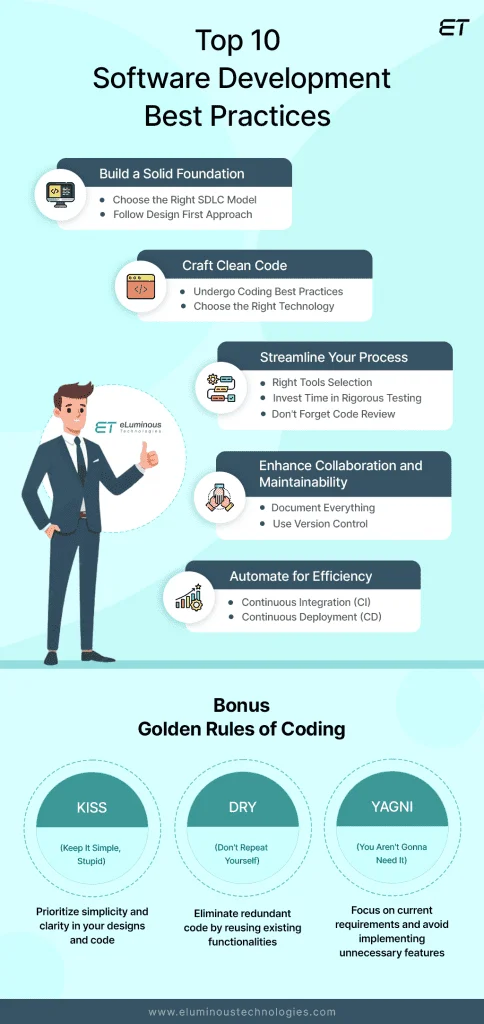
The following points emphasize the significance of adhering to best practices in the software development life Cycle (SDLC).
- Organizations must adopt best practices that streamline their software development processes and produce higher-quality software to succeed in this dynamic digital age.
- Techstacks used in software development are constantly evolving and changing. However, many organizations find it challenging to maintain the most recent software for their development team. But implementing software development best practices can help.
- Adhering to software development practices supports the process’s alignment with the result. These software development techniques and processes make the entire development process simpler.
- Following best practices for software development tells clients that you are dedicated to providing them with high-quality software that fulfills their needs and surpasses their expectations, which can help you gain their trust and credibility.
This blog covers thoughtful software development best practices. These can be very helpful to you when you develop your own software. Before we do that, let’s clarify what best practices mean and why your dream project should adhere to them.
What are Software Development Best Practices and Methodologies?

Best practices for software development are a collection of standards and procedures intended to improve software projects’ effectiveness, potential, and maintainability. Systematic planning, team-based coding, thorough testing, and continuous integration are all part of these procedures.
Coders can read and scale their code more easily when they follow best practices emphasizing version control, modular design, and good documentation. Regular upgrades, security concerns, and adherence to industry standards ensure software lifespan and flexibility, which eventually result in a more dependable and sustainable development process.
Reliable software development companies adhere to best practices to ensure efficient, high-quality, and scalable solutions. It builds client trust, facilitates seamless project management, and enables continuous improvement, positioning these companies as industry leaders.
How Software Development Practices Impact your Project?

Software development best practices play a crucial role in shaping the success and sustainability of a project.
Here are keyways these practices impact your project:
-
High Quality
Implementing best practices ensures the production of high-quality software. Whether using waterfall or agile software development techniques, they guarantee high-quality results. Dedicated developers adhering to the guidelines yield the intended results.
-
Better Scalability
Best practices promote modular and scalable design. This enables the software to handle increasing workloads and adapt to evolving requirements, ensuring the project remains viable and adaptable in the long run.
-
Secure Software
Enterprises can more effectively adhere to security and data protection regulations by utilizing software development strategies and methodologies. Using best practices aids in the early detection and resolution of possible problems during the development process.
Explore web application penetration testing methodologies.
-
Customer Satisfaction
Customer satisfaction is increased when reliable, high-quality software is delivered on schedule and meets expectations. Exceeding or meeting client expectations fosters long-term partnerships and excellent referrals while also establishing trust.
-
Regulatory Compliance
Adherence to best practices for software development often aligns with industry standards and regulatory requirements. This ensures that the software complies with legal and ethical standards, reducing the risk of legal issues and enhancing the project’s credibility.
Top Software Development Best Practices and Standards
The best methods and approaches for every software project act as a set of guidelines that developers can follow to increase software quality, encourage teamwork, and aid in scalability and maintainability.
Let’s explore all the software development practices that our team implements, resulting in robust and flawless software development in less time.
1. Choose the Right SDLC Model
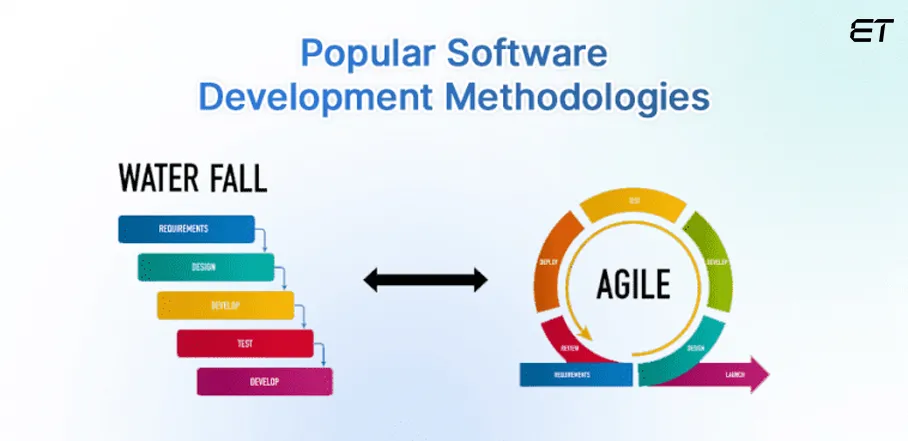
Out of various software development methodologies, the two most popular are Agile and Waterfall.
-
Agile Methodology
Agile development is a software development methodology that strongly emphasizes teamwork, adaptability, and ongoing progress. It is an adaptable strategy that emphasizes collaboration and ongoing development. Because it divides tasks into manageable chunks, it is simple to adjust to changing requirements.
Agile development seeks to minimize risk and maximize commercial value in each iteration while producing high-quality software that satisfies stakeholders’ demands. The flexibility of agile development to adjust to shifting needs and priorities is one of its key advantages.
Read our comprehensive guide on QA process in agile.
-
Waterfall Methodology
The traditional “waterfall development” approach is a sequential and linear procedure. Gathering requirements, designing, implementing, testing, deploying, and maintaining the system are some of its aspects.
It is a systematic, linear approach. It works well when there are minimal requirements changes throughout the project. According to top software development companies, it is ideal for creating business landing page websites with precise deadlines and defined goals.
Are you wondering which methodology to choose?
Well, the nature of the project and the intended result determine which methodology is best for your project.
While selecting the appropriate method, keep the following points in mind:
- Project Complexity: Evaluate the project’s complexity to match it with a proper methodology.
- Team Expertise: Consider the expertise and skills of the project team members.
- Flexibility: Assess the adaptability of the methodology to changes in project requirements.
- Budget and Timeline: Evaluate the budget and timeline constraints to ensure alignment.
- Risk Tolerance: Gauge the project’s risk tolerance and select a methodology that addresses it.
- Communication Needs: Consider communication requirements among team members and stakeholders.
- Scalability: Assess the scalability of the method for potential future expansions.
2. Follow Design First Approach

Creating excellent software requires adhering to best practices in software development. Before writing any code, the software program must be planned and visualized. This entails drawing up a thorough blueprint of the software’s architecture, functionality, and user interface.
Designing before coding is a crucial best practice software development. It is essential because it ensures that the finished product fulfills the intended goals and operates well. Planning and arranging the software or application’s features and functionalities is called designing. It allow the dedicated software development team to see the final product, spot possible issues, and fulfill all requirements.
A strong product design plan can save time and money and avoid costly errors by being in place before coding is done. Design before coding guarantees the finished result is functional, user-friendly, and achieves the intended goals.
Various design methodologies, including wireframing, prototyping, and mockup creation, are available to software engineers. Before developing code, developers can use these techniques to see how the software will work and how it will be designed.
3. Undergo Coding Best Practices

All software engineers, regardless of experience level, must adhere to the coding standards. One essential software development best practice is to pay attention to style guides to ensure uniformity and maintainability of code. A style guide guarantees that code is readable, consistent, and simple to comprehend by offering writing principles.
Ensuring that all team developers create code that complies with the same standards can be achieved by using a style guide. Team members can better read and comprehend one other’s code, facilitating project collaboration.
A good style guide includes formatting, naming, commenting conventions, and coding techniques. To reflect changes in coding standards and procedures, it should be simple to understand and implement and updated frequently.
-
Naming Conventions
Naming conventions define how names are assigned to variables, functions, files, etc. They enhance code readability, maintainability, and consistency by establishing a standardized naming format within a project.
-
Commenting Conventions
Commenting conventions are guidelines for adding explanatory remarks in code. They ensure consistency in comments, facilitating code understanding and collaboration. Conventions include clear, concise comments, using a specific style, and documenting code logic, assumptions, or complex functionalities.
-
Formatting Conventions
Formatting conventions are rules governing the layout and structure of code. They dictate consistent indentation, spacing, and style, enhancing readability and maintainability. Adhering to formatting conventions helps developers write aesthetically pleasing and easy-to-understand code.
4. Choose the Right Technology

One of the most important considerations when creating an custom web application is selecting the best technologies, like databases, frameworks, libraries, and programming languages.
Selecting the best technology is crucial for a project’s successful and efficient development. A well-chosen solution increases output guarantees alignment with project specifications, and promotes scalability, lowering expenses and risks while promoting adaptability and long-term maintenance.
Discover the most popular front-end and back-end technologies.
Factors to consider while choosing the right technology:
- Assess Project Needs: Understand your project’s specific requirements and goals.
- Scalability: Choose scalable technologies to accommodate future growth.
- Community Support: Opt for technologies with active and supportive communities.
- Compatibility: Ensure compatibility with existing systems and tools.
- Evaluate Performance: Assess the performance metrics and benchmarks of potential technologies.
- Consider Cost: Evaluate the cost implications, including licensing fees and maintenance expenses.
- Security: Prioritize technologies with robust security features.
5. Right Tools Selection
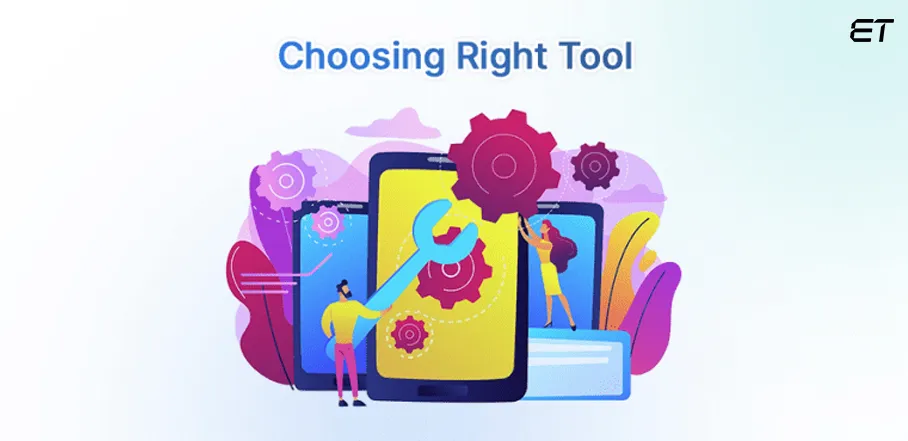
As a developer, you should always select the appropriate tools for your software development process. In addition to improving process efficiency, this aids in life cycle development.
The development process can be automated with a variety of tools, and this is an effective way of preventing errors that can arise from repetitive work, such as automated testing tools, digital transformation tools, API integration tools, .NET development tools, AngularJS development tools, etc.
Tips to choose the best tool:
- Define Requirements: Clearly outline project requirements and objectives.
- Evaluate Compatibility: Ensure the tool aligns with your project’s technology stack.
- Consider Scalability: Assess the tool’s scalability to accommodate future growth.
- Community Support: Choose tools with active communities for ongoing support.
- Cost and Licensing: Evaluate the cost and licensing model for budget alignment.
- Integration Capabilities: Confirm the tool’s ability to integrate with other essential tools in your development ecosystem.
6. Invest Time in Rigorous Testing
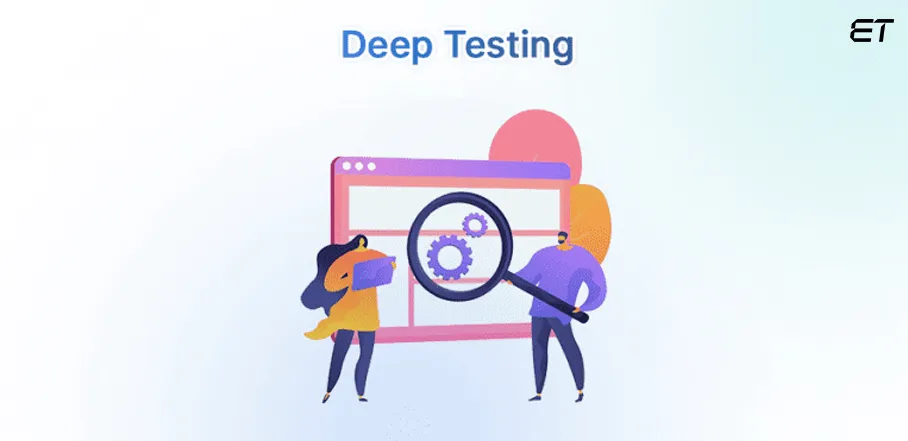
One of the most important things that developers should always keep in mind when creating an application is testing. Writing test-ready code enables you to produce efficient and error-free code. It also aids in bug detection and future bug prevention. That’s why it is considered the best practice in software development.
Find the difference between End-to-End Testing vs Integration Testing.
In software engineering, good testing techniques guarantee quality standards and direct and shape the development process. Being a reliable software development company using the right testing techniques we ensure the code satisfies all user needs and produces the intended outcome.
Here are some best practices for testing:
- Early Testing: Start testing early in the development process.
- Automated Testing: Implement automated testing for efficiency and consistency.
- Comprehensive Test Coverage: Ensure thorough coverage of all code functionalities.
- Test Data Management: Manage test data effectively to simulate real-world scenarios.
- Continuous Integration: Integrate testing into the CI/CD pipeline for rapid feedback.
- Regression Testing: Regularly conduct regression testing to catch unintended side effects.
- User Scenario Testing: Mimic real user scenarios to validate system behavior.
- Performance Testing: Assess system performance under various conditions.
- Collaboration: Foster collaboration between developers and testers for better communication.
- Documentation: Maintain comprehensive testing documentation for future reference.
7. Don’t Forget Code Review

Acknowledging that errors are inevitable in software development is the first step toward appreciating the importance of a code review. Getting a colleague to check your pull requests before merging them is an excellent way to ensure the code is well-written overall.
A software developer will analyze another software developer’s code (or pull request) during a code review process. It lowers the amount of work needed to optimize code later on, helps find flaws, and enhances the general quality of the code.
Code reviews save a lot of money and time by allowing the dedicated development team to find potential issues that might go unnoticed during testing. It is, therefore, among the software development practices and methodologies.
Tips for effective code review:
- Structured Process: Establish a structured code review process.
- Set Clear Objectives: Clearly define specific goals for each code review session.
- Use Code Linters: Employ code linters to catch common issues automatically.
- Rotate Reviewers: Rotate reviewers to ensure diverse perspectives.
- Provide Constructive Feedback: Offer specific, constructive feedback to promote improvement.
- Focus on Code Quality: Prioritize code readability, maintainability, and adherence to coding standards.
- Continuous Learning: Use code reviews as opportunities for continuous learning and knowledge sharing.
8. Document Everything

Documentation is an essential aspect of best practices in software development. It facilitates onboarding and knowledge transfer by giving present and future staff a reference point. Today, enterprises prefer a custom software development business that offers documentation in great demand.
In software development, documenting everything guarantees thorough comprehension, promotes knowledge sharing among team members, helps with maintenance and debugging, improves standard compliance, and reduces risks. It facilitates onboarding and encourages productive teamwork, making it an essential reference point for future development.
Proper documentation serves as a roadmap for software scaling and maintenance, keeping the essential features and requirements intact.
Recording your progress is beneficial in that it keeps you from making the same mistakes twice.
Let’s cover what you should document:
- Project Requirements: Clearly outline project objectives and specifications.
- Architecture and Design Decisions: Document the system architecture and critical design decisions.
- Codebase: Include inline comments explaining complex sections and the reasoning behind certain code choices.
- API Specifications: Detail API functionality and usage.
- Testing Procedures: Document test cases, methodologies, and results.
- Deployment Instructions: Provide clear steps for deployment.
- User Manuals: Create user-friendly manuals for end-users.
- Change Log: Keep a log of changes, enhancements, and bug fixes.
- Lessons Learned: Document insights and lessons learned during the development process.
9. Continuous Integration (CI) & Continuous Deployment (CD)
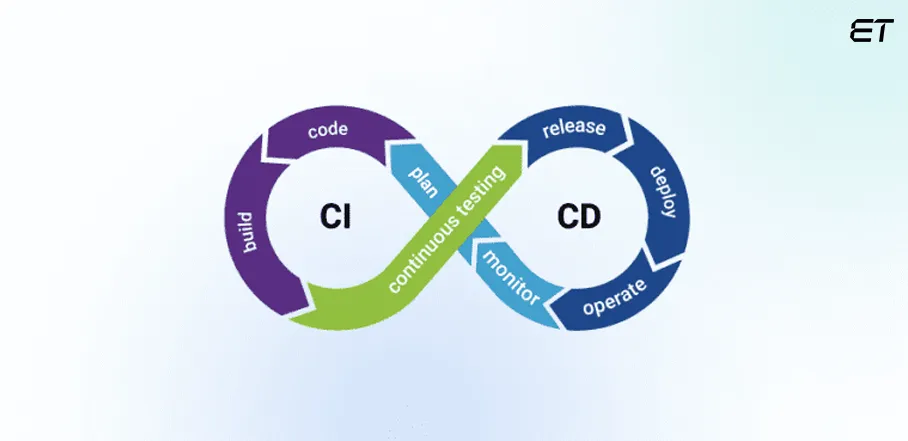
Continuous Integration (CI) is a software development process that involves automatically testing and integrating code changes into the main repository to guarantee early issue discovery. Continuous Deployment (CD) extends CI by automatically deploying successful code changes to production, enabling rapid and reliable software delivery.
Continuous Integration (CI) and Continuous Deployment (CD) are considered best practices in software development because they streamline the development lifecycle. CI ensures that code changes are regularly tested and integrated, catching defects early and fostering collaboration. CD extends this by automating the deployment process, allowing for swift and reliable delivery of software updates to production.
When combined, CI/CD techniques shorten time-to-market, improve code quality, and decrease manual errors. This method encourages a more responsive and agile development environment where teams may enhance code stability, produce dependable software more quickly, and swiftly adjust to changing requirements.
10. Use Version Control

A software engineering system known as “version control” keeps track of all modifications and synchronizes them with a master file on a remote server. According to leading web developers it is one of the software development best practices.
Writing production code requires a robust version control system.
Here are some of the top benefits of using version control:
- It facilitates seamless collaboration among team members.
- It maintains a detailed history of code changes, aiding in issue resolution.
- It supports parallel development with branching and smooth integration with merging.
- It ensures code integrity by preventing accidental overwrites and conflicts.
- It allows for easy replication of specific code states, which is crucial for debugging.
- It enables quick and safe rollback to previous versions in case of issues.
- It provides a clear audit trail, aiding in accountability and compliance.
- It simplifies the code review process for quality assurance.
- It enables multiple developers to work on different features simultaneously.
When numerous dedicated developers works together on the same project, version control becomes more crucial, enabling them to fix errors without one developer overwriting another’s code. Version control systems, such as GitHub, allow software to be rolled back to earlier versions without interfering with other developers’ work on the same feature.
Software Development Best Practices Checklist: Follow 3 Principles
Besides the above 10 software development best practices, there are three more simple rules followed by experienced developers that are considered best practices in software development. They are KISS, DRY, and YAGNI. Let’s discuss them in detail.
| Principle | Abbreviation | Explanation |
 |
Keep It Simple, Stupid | The KISS principle in software development advocates for simplicity and clarity. It suggests that systems and designs should be kept straightforward rather than overly complex, enhancing readability and maintainability. Simplicity reduces the likelihood of errors, making software more reliable and easier for developers and users to understand. |
 |
Don’t Repeat Yourself | The DRY principle in software development promotes code efficiency by advocating eliminating redundant code. It emphasizes reusing existing code to avoid duplication, reducing maintenance efforts, and ensuring consistency. DRY improves code readability, lowers the chance of errors, and facilitates more accessible updates across the codebase. |
| You Aren’t Gonna Need It | The YAGNI principle in software development advises against implementing features or functionality prematurely. It encourages developers to focus on current requirements rather than anticipating future needs. This minimizes unnecessary work, reduces complexity, and ensures that efforts are directed toward immediate project needs. |
Ensure Success by Navigating Software Development Practices
When you hire a web development company, ensure they provide modern web development services and adhere to best practices for software engineering. In this way you will have access to an excellent application, maintain data integrity, meet industry standards, and maximize the potential of the app.
At eLuminous Technologies, we cover the whole spectrum from development to testing to implementation and management. Our custom, robust, and scalable software, designed to satisfy particular needs, helps you realize your vision at scale.
We use our twenty years of experience in developing custom solutions that meet urgent needs as we work on and explore the finest practices and maintain top software development standards.
As a top custom software development company, we ensure that our software solutions meet our client’s business objectives while also being scalable and reliable. With every project we take on, we aim to surpass expectations by implementing software development best practices and methodologies.
Endnotes: Software Development Standards
It’s important to remember that software development is a constantly changing field, so it is important to stay flexible and willing to learn new methods and resources.
As you are aware, the main goal of best practices for software development is to assist you in writing code that will be simpler to work with and update later on. Your team will work more productively if you follow these best practices, particularly if you have a small development team.
Learn how to build a web development team for your business.
Developers must know and use these top software development best practices 2024 in their projects. Those processes aid in guaranteeing the quality, reliability, and security of software products from the very beginning of design and planning through development, testing, and implementation.
By carefully adhering to these best practices, we’ve seen notable gains in productivity, teamwork, and stakeholder and member communication.
Get in touch with our support team to learn about software development in a practical way.
Frequently Asked Questions
What happens if we don’t follow software development best practices?
Failure to follow software development best practices can lead to code inefficiency, increased bugs, higher maintenance costs, and difficulty in collaboration. It may result in a less reliable and scalable software product, hindering long-term success and user satisfaction.
What is the Software Development Life Cycle?
The SDLC or software development life cycle is a systematic process that outlines the stages of developing software, from initial planning and requirements gathering to coding, testing, deployment, and maintenance. It ensures structured development, quality, and efficiency.
What factors are most crucial to the success of a software project?
Key factors for software project success include precise requirements, effective communication, a skilled and motivated team, realistic timelines, thorough testing, adaptability to change, robust project management, and continuous stakeholder feedback, ensuring alignment with business goals and user needs.
Why are software development best practices important?
By implementing software development best practices and methodologies, you can experience improved software quality, increased efficiency, and lower development costs. In addition, following these practices can enhance collaboration and ensure the formulation of a smooth development process.




